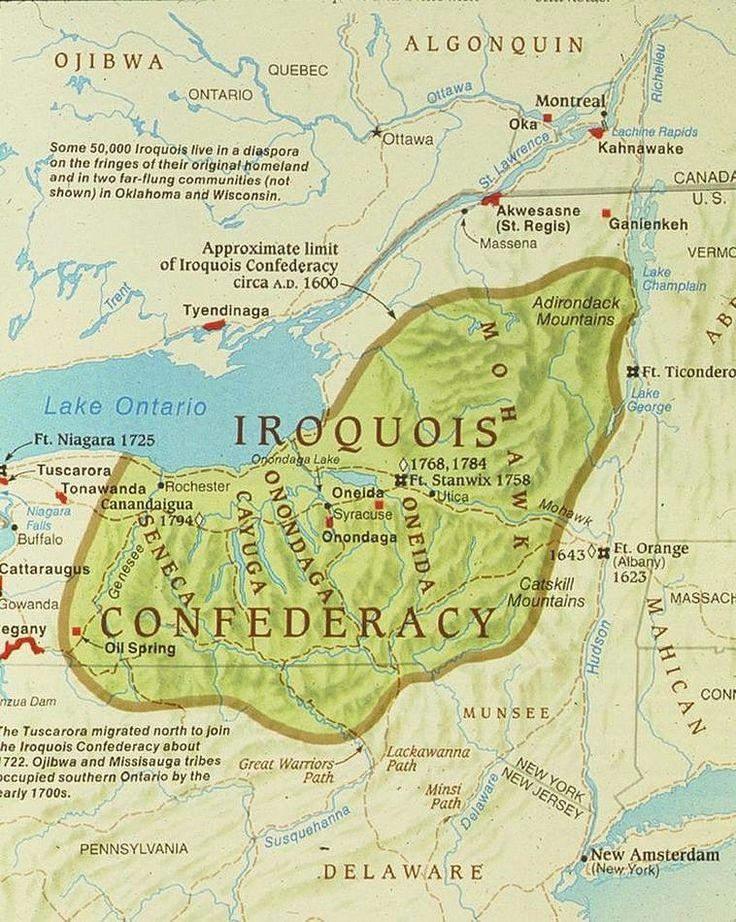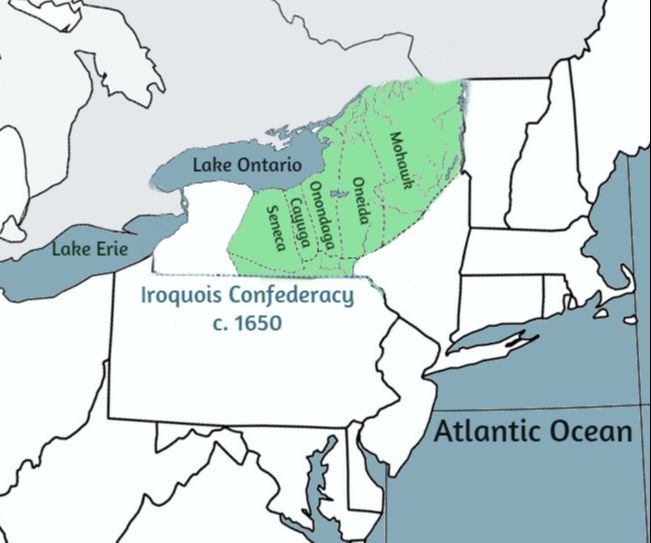
Unearthing the Heart of Turtle Island: A Journey Through Haudenosaunee Territory
Forget your preconceived notions of American history. Forget the sterile timelines and the one-sided narratives. To truly understand the foundational pulse of North America, you must venture into the ancient, living territories of the Haudenosaunee Confederacy – the "People of the Longhouse," often known as the Iroquois. This isn’t just a trip; it’s an immersive pilgrimage, a chance to walk on ground steeped in millennia of culture, governance, and profound connection to the land. As a travel blogger, I’ve scoured maps, chased sunsets, and sought out authentic experiences, but few journeys have resonated with the depth and transformative power of exploring the historical and contemporary lands of the Haudenosaunee.
Our map for this expedition isn’t a modern highway grid, but rather the expansive, vital network of territories that once stretched across much of present-day Upstate New York, parts of Pennsylvania, Ontario, and Quebec. This vast domain, crisscrossed by ancient trails, mighty rivers, and the serene Finger Lakes, was not merely conquered land; it was a carefully managed ecosystem, a spiritual homeland, and the cradle of a political system that predates and, arguably, influenced many aspects of Western democracy.
The Land Speaks: Geographic & Historical Context

The moment you leave the bustling urban centers and drive into the undulating hills and valleys of Upstate New York, you begin to feel it. The land itself whispers stories. This is the heartland of the Haudenosaunee, whose original confederacy united the Mohawk, Oneida, Onondaga, Cayuga, and Seneca nations, later joined by the Tuscarora. Their territory wasn’t a static boundary on a colonial map; it was a dynamic, living space defined by their agricultural practices, hunting grounds, spiritual sites, and the paths connecting their longhouse villages.
The Finger Lakes region, with its deep, glacial lakes resembling the fingers of a giant hand, was particularly central to the Seneca and Cayuga. The rich soil of the Mohawk Valley nurtured vast cornfields, the lifeblood of the Mohawk nation. The Onondaga, as Keepers of the Central Fire, resided near what is now Syracuse, their capital a beacon of diplomatic activity. This was a land of abundance – forests teeming with game, rivers teeming with fish, and fertile plains supporting the "Three Sisters" (corn, beans, squash) that formed the cornerstone of their diet and culture.
Where to Begin Your Journey: Sites of Profound Significance
To truly grasp the Haudenosaunee legacy, you need to engage with both the historical echoes and the vibrant contemporary presence.

-
Ganondagan State Historic Site (Victor, NY): This is arguably the single most important starting point for understanding Seneca culture and history. Ganondagan was a major 17th-century Seneca town, destroyed by the French in 1687. Today, it’s a living museum and interpretive center that transports you back in time.
- The Experience: Walk through a full-scale, reconstructed Seneca Bark Longhouse – a marvel of communal living and architectural ingenuity. Inside, the exhibits vividly portray daily life, spiritual beliefs, and the sophisticated social structure of the Seneca people. The Interpretive Center features engaging displays on Haudenosaunee history, the Great Law of Peace, and their profound connection to the natural world.
- Why it Matters: The trails at Ganondagan lead you through reconstructed gardens and offer panoramic views of the very landscape the Seneca once inhabited. It’s a powerful, tangible connection to a people who thrived here for centuries. The site doesn’t shy away from the trauma of colonial contact but emphasizes the resilience and enduring spirit of the Haudenosaunee.

-
Skä•noñh—Great Law of Peace Center (Onondaga Lake, Syracuse, NY): Situated on the shores of Onondaga Lake, a sacred site for the Onondaga Nation, this center offers another crucial perspective. Skä•noñh, meaning "peace and wellness" in Onondaga, focuses on the contributions of the Haudenosaunee to democracy and environmental stewardship.

- The Experience: The exhibits are meticulously curated, telling the story of the Great Law of Peace, the visionary constitution that united the nations and laid the groundwork for a representative government. You’ll learn about Hiawatha and the Peacemaker, the central figures in the Haudenosaunee origin story, and their enduring message of unity and respectful coexistence.
- Why it Matters: This center highlights the impact of Haudenosaunee thought on the broader world, including potential influences on the U.S. Constitution. It challenges the notion that democracy is solely a Western invention and underscores the sophisticated political philosophy that emerged from these lands.
-
Kanatsiohareke Mohawk Community (Fultonville, NY): For a glimpse into contemporary Haudenosaunee life and language revitalization, a visit to Kanatsiohareke is invaluable. This is a Mohawk community re-established in 1993, dedicated to preserving traditional ways and the Mohawk language.
- The Experience: While not a public tourist attraction in the traditional sense, Kanatsiohareke occasionally hosts cultural events, workshops, and welcomes respectful visitors who genuinely seek to learn. Always check their website or contact them in advance to understand their protocols and offerings. Engaging with community members, if opportunities arise, offers an unparalleled chance to hear stories, witness language in use, and understand the daily realities of cultural preservation.
- Why it Matters: This community represents the ongoing strength and determination of the Haudenosaunee to maintain their identity in the modern world. It’s a testament to their resilience and commitment to their heritage.
-
The Mohawk Valley & Erie Canal: As you travel eastward through the Mohawk Valley, you’re traversing a crucial corridor of both Haudenosaunee history and subsequent colonial expansion. The Mohawk River was a primary artery for trade and travel for the Mohawk Nation for millennia. The later construction of the Erie Canal, while an engineering marvel, also dramatically altered the landscape and facilitated European settlement, often at the expense of Indigenous lands.
- The Experience: While the canal itself is a symbol of colonial development, understanding its historical context within Haudenosaunee territory adds a layer of complexity to your journey. Many towns along the canal have local historical societies that touch upon the region’s Indigenous past, albeit often from a non-Indigenous perspective. Seek out markers or small museums that specifically address the Mohawk presence.
- Why it Matters: This area showcases the profound intersection of Indigenous and settler histories, highlighting both cooperation and conflict, and the dramatic changes wrought upon the landscape and its original inhabitants.
Beyond the Sites: Embracing the Living Culture
This journey isn’t just about visiting historical markers; it’s about connecting with a living, breathing culture.
- Arts & Crafts: Seek out authentic Haudenosaunee art. Cornhusk dolls, intricate beadwork, wampum belts (replicas, as originals are sacred and rare), and traditional carvings are not just souvenirs; they are expressions of identity, storytelling, and skill passed down through generations. Supporting Indigenous artists directly contributes to cultural preservation.
- Foodways: While difficult to find in mainstream restaurants, understanding the Haudenosaunee diet – emphasizing the Three Sisters, wild game, and foraged plants – offers insight into their sustainable relationship with the land. Look for community events or farmers’ markets that might offer traditional foods.
- Language: Even learning a few words in Mohawk (e.g., Sken:nen – peace, Nia:wen – thank you) or Onondaga demonstrates respect and opens doors for connection. Many communities are actively engaged in language revitalization, recognizing it as a key to cultural survival.
- Festivals and Powwows: If your visit coincides with a local powwow or cultural festival, seize the opportunity. These vibrant gatherings are celebrations of culture, featuring traditional dances, music, drumming, storytelling, and craft vendors. They offer a respectful way to witness and participate in Indigenous cultural life, but remember to be a respectful observer and follow any protocols.
Planning Your Respectful Journey
- Do Your Homework: Before you go, research the specific nations whose traditional territories you’ll be visiting. Understand their history, current challenges, and cultural protocols.
- Respect Sovereignty: Remember that Haudenosaunee nations are sovereign entities. Their reserves (reservations) are their homelands, and visitors should act with the utmost respect.
- Ask Permission: When in doubt, ask. This applies to taking photos of people, entering certain areas, or participating in ceremonies. A simple "May I take your picture?" goes a long way.
- Listen and Learn: Approach this journey with an open mind and a willingness to listen to perspectives that may challenge your own. The Haudenosaunee have powerful stories to tell, and their resilience is a testament to their enduring spirit.
- Support Indigenous Businesses: Whenever possible, choose to spend your money with Indigenous-owned businesses, artists, and cultural centers. This directly supports the communities you are visiting.
- Travel Season: While beautiful year-round, late spring to early fall offers the best weather for outdoor exploration and a higher chance of cultural events.
The Enduring Legacy
Traveling through the historical territory of the Haudenosaunee Confederacy is more than just a scenic drive or a history lesson. It’s an awakening. It’s a chance to confront the complexities of history, to appreciate the profound wisdom of Indigenous governance and environmental stewardship, and to witness the incredible resilience of a people who have faced immense challenges yet continue to thrive.
The Iroquois Confederacy territory maps are not just lines on old parchment; they are blueprints of a vibrant civilization, a testament to deep connections to land and community. By exploring these lands with an open heart and a respectful mind, you embark on an unforgettable odyssey that not only enriches your understanding of North America but also inspires a deeper appreciation for cultural diversity and the enduring power of peace. This journey isn’t just about seeing; it’s about understanding, connecting, and ultimately, transforming your own perspective on the world. Go, explore, and let the heart of Turtle Island speak to you.
